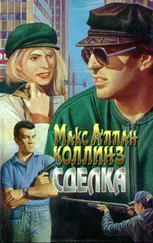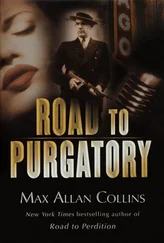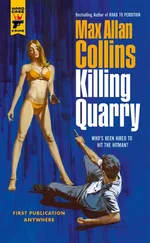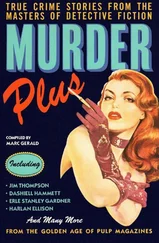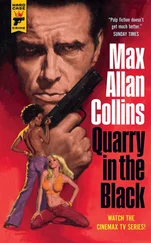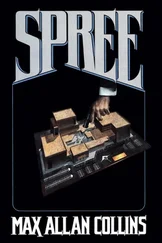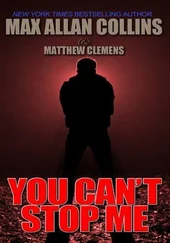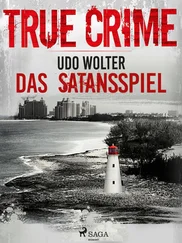I had, that one last time. It disturbed Sally, and I think it disturbed Chicago, to realize the fair was finally over. The illusion of a streamlined future was just so much scrap lumber now, in this city mired in a dreary present.
We never got back together, Sally and me, after our summer. We remained friends over the years, but she married (several times) and she wasn’t the kind to fool around. She was a very moral girl, Sally Rand.
But she stayed in show business. She never made it in the movies, really, but she kept on fan-and-bubble dancing throughout her life. That wasn’t all, of course — through the thirties she lectured on intellectual and political topics, speaking out for republican forces in the Spanish Civil War; she even went to college, earned a degree. Shortly before she died in 1979, I spoke with her on the phone; I asked her why she was still doing her fan dance after all these years.
“Don’t be so up-tight, Heller!” she’d said. “I do it because I still like doing it. Better than doing needlepoint on the patio.”
I sent a wreath that said, “Good-bye, Helen.” I didn’t go the funeral; it was in California, and I was in Florida, and try to avoid funerals, particularly my own, which at my age is a good trick.
As for the rest of them, well, I kept track of some; others just faded into a well-deserved obscurity.
Still others found a place in history, at least the sort of history “true crime” buffs thrive on.
I remember feeling strangely numb, reading the write-up in the paper, when Inspector Sam Cowley and Baby Face Nelson met for the second time.
November 1934. Cowley and another agent stumbled onto Nelson, his wife and John Paul Chase, their car stalled, spouting steam from a bullet caught in a wild gunfight with several other feds down the road. Helen dove for cover, as Cowley, in a ditch, traded tommy-gun fire with Nelson, who strode slowly, inexorably toward Cowley, machine gun spraying slugs. Cowley hit Nelson several times, but Nelson came on, his tommy gun blazing, sweeping the gun in flaming arcs across the ditch, bullets tearing across Cowley, killing him. A nearby construction worker said later, “It was just like Jimmy Cagney.”
Soon Lester Gillis got in the car and asked his wife to drive. “I’ve been hit,” he said. He had seventeen bullets in him. Helen and Chase abandoned his naked corpse in a drainage ditch.
Helen testified against Chase and got a reduced sentence; Chase went to Alcatraz, mellowed, and painted oils.
Doc Barker was captured in Chicago in January 1935; he was living in the Pine Grove apartment at the time, out having an evening stroll when Purvis captured him; Doc was unarmed, and when Purvis asked him where his gun was, he said, “Home — and ain’t that a hell of a place for it!”
Ma and Fred had taken a two-story white cottage on Lake Weir in Florida when the feds surrounded the place and demanded their surrender. Someone within the house opened fire, and the agents riddled the cottage with slugs. Fred was found with eleven bullets in him; Ma with three. Both were dead.
Nobody had ever heard of Ma Barker, at this point; but the Division of Investigation had a dead old lady on their hands. So J. Edgar’s publicity boys turned her into the brains of the gang and created the legend of the “bloody mama,” avoiding the public embarrassment of having murdered a little-old-lady nonentity — at the same time, giving the newly rechristened Federal Bureau of Investigation that much further glory. Ma was never on a public enemies’ list, nor was she ever charged with a crime, let alone indicted. She was just an Ozark ma who loved her boys, if not wisely.
In June 1939 Doc attempted to escape from Alcatraz and was hastily assembling a raft when the rifles from the guard towers cut him down.
George Barker, Ma’s long-deserted husband, buried his boys and his wife in an open field near his small-town filling station in Oklahoma, in front of which he would sit in a chair leaned up against the building, listening to hillbilly music on the radio.
In October 1934, Pretty Boy Floyd, fleeing across an open field in Ohio, was cut down by Purvis and a squad of special agents in a hail of rifle and machine-gun fire. Purvis leaned over the dying man and asked him if he was Pretty Boy Floyd.
“I’m Charles Arthur Floyd,” he said. Then he denied being part of the Kansas City Massacre, cursed Purvis, and, finally, got across the river.
I don’t know what became of the “molls”: Helen Nelson (Gillis), Fred’s girl Paula, Karpis’ girl Dolores. She had his kid, I heard, a boy.
Karpis himself became a special target of Hoover’s. Hoover held Karpis responsible for the attempted kidnap in front of the Banker’s Building, and — sensitive to criticism that he had no real police background, that he’d never been on a real case, made a real arrest — Hoover arranged to be present at Karpis’ bloodless capture in New Orleans, in May 1936. Dozens of agents swooped down on Karpis, and once he was secured, Hoover was brought in to slap on the cuffs. But nobody had remembered to bring any, and an agent took off his tie and that was used instead. Karpis went to Alcatraz, was a docile prisoner, and upon his release was deported to Canada; he died in 1979.
As for the cops, Captain Stege retired and passed away a few years later. O’Neill the same. Zarkovich, however, became chief of detectives in East Chicago and then chief of police, surviving various grand jury investigations and reform administrations, working till his death in 1969. He never bragged about his role in the Dillinger shooting; he would only modestly say, “I just did my job.”
Polly Hamilton dropped out of sight for several years, but she turned up in Chicago in the forties, working at the Ambassador East Hotel in room service. Rumor had it she was doing more than providing late-night snacks and club soda, as she had a fancy Gold Coast apartment at the time. She was living in Old Town, married, still working for a hotel, when she died in 1969 of cancer of the tongue.
Anna Sage, despite Purvis’ pledge, was deported. In 1938 an angry Anna got on a train at LaSalle Street Station, destination Ellis Island; Hal Davis told me he saw a man see her off, and give her a package, whispering to her, calming her down. The man was Zarkovich. But before she sailed, she told reporters, “I will one day reveal startling new facts about the Dillinger slaying! They cannot keep me from coming back — I’ll be back someday!” She never did. After running a nightclub in Romania for some years, she began talking about going onstage to tell the “real story” of the Dillinger shooting. She was found dead along a Romanian roadside in April 1947. Cause of death remains a mystery.
Louis Piquett finally was disbarred, and went to Leavenworth in 1936, for a two-year sentence. He returned to bartending in 1938, but did a lot of legal work on the side, and still had friends in high places: President Truman, in January 1951, gave him a full pardon, and his reinstatement to the Illinois bar was imminent when he died that December.
The publicity the Biograph shooting brought to Melvin Purvis made him, and the G-man in general, a public hero. He resigned the division in 1935, after an apparently jealous Hoover crossed him, failing to back Purvis’ promise to Anna Sage of nondeportation, and (worse yet) pressuring Attorney General Cummings into denying permission for a Hollywood movie about Purvis’ adventures. Little Mel, “the most famous operative of the most famous law-enforcement agency in the United States,” hired on as spokesman for the Post Toasties Junior G-man Corps, appearing in comic-strip ads in the Sunday funnies. He worked on radio, as an announcer for FBI-oriented programs, and as a screenwriter; he even practiced law occasionally. During World War II he was a colonel and worked out of the War Crimes Office. But he ended up back home in South Carolina, running a radio station.
Читать дальше

